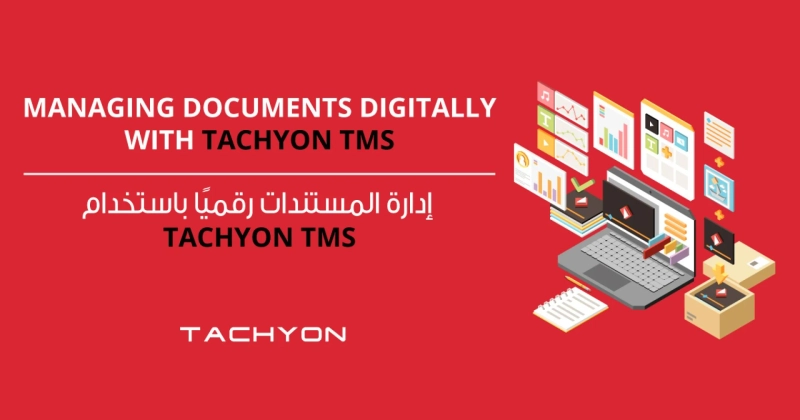Logistics controllers are in charge of numerous vital processes required for the effective and persuasive execution of deliveries. Best practices for transportation document management are among the most crucial since they give executives, shippers, drivers, transporters, intermediaries, and customers quick and easy access to shipping documentation. The generation of digital documentation reduces operating costs related to conventional freight management procedures and streamlines information sharing amongst supply chain partners. Let us discuss how refined, automated TMS services within a networked platform streamline logistical paperwork management.
About TMS
A software application called a transportation management system is made to help companies handle the logistics of transferring physical goods. The supply chain management system's TMS logistics software tracks freight on domestic and international routes, optimizes loads and shipping routes, automates time-consuming processes like freight billing and exporting dedication records, and helps guarantee that goods are delivered on schedule. With a TMS system, companies and users can reduce expenses.
Implementing cloud-based transportation management system software has created a level playing field. Smaller companies are now using TMS software because, to remain competitive in today's market, they need an integrated digital system, which was previously only available to larger enterprises. The rise of the e-commerce sector and cloud-based technology is causing more use of digital documentation.
Digital Documentation
One feature of digitization is dealing with huge volumes of data rapidly, consistently, and with fewer resources. A sizeable administrative department with sufficient staff would be required to process the same quantity of data by hand, which would take months. However, thanks to technology, countless papers may now be reviewed, sorted, and shared in a matter of seconds. Several methods for digitizing documentation related to transportation provide increasingly more choices to higher tiers.
All of them aim to develop networked, digital, seamless mobility. Companies that advance through this step become service providers instead of primary carriers. Transportation companies employ data storage in this new phase to look into new business opportunities, increase competitiveness, and improve internal and external relationship management.
Organizations that rely significantly on logistics must keep an eye on every element affecting every section of the procurement channel; this is what makes the delivery network successful. Selecting the carrier that will manage the service, loads, rate management, loads, and other activities requires using TMS software.
A TMS application combines all the components needed to manage transportation in the most efficient and optimum way. One of the most important aspects of the Transportation Management System is that it is an application for managing the primary transportation of intercity goods, packages, and cargo, among other things. One part of the ERP and other supply chain systems is the TMS. Some benefits are enhanced sales, better container reorganization, logistic supplier tracking, activity authority, and cost savings.
Advanced Document Management System
The majority of work in old logistics was done on paper copies. Purchasing hard copies also costs money. On the other hand, the transportation management system encourages these kinds of tasks using technology. For instance, the TMS handles all types of digital documents, including invoices and receipts. The procedure runs more smoothly and productively when done digitally. Digital papers also become easier to locate and track.
Emails, papers, images, and more information are just a few of the material types organized and secured by a strong, firm content management system. Document management, cooperative behavior, research, category, variation, checking, privacy, oversight, and retention are all supported by its features. Digital document creation and management tools improve your freight and logistics services. Using pre-existing templates for bills of lading, POD inquiries, CMRs, and invoices, document generation generates digital files with editing and auto-fill features.
You can deal with manual paperwork and email interactions by employing digital documents connected within a single platform. Furthermore, thanks to advancements in storage via the internet, real-time data collection, and on-demand tracking updates, transportation supervisors can keep track of all freight papers. Because everyone can access logistics paperwork from anywhere with cloud-hosted TMS solutions, teams may function more efficiently and communicate more easily. Digital document creation and control enable instantaneous and dependable access to all necessary shipping documentation.
Benefits Of Digital Documentation through TMS
Logistics organizations take advantage of transportation management software's ability to generate digital documents. Freight document management has become more efficient by creating digital papers and cloud-hosting platforms. Shipping recording is made more accessible when managers and staff collaborate and access logistical documents in real time. Teams working in shipping and transportation may work efficiently, communicate with each other without difficulty, and produce all shipment paperwork electronically.
You can effectively teach your staff to activate and optimize the system. The sharing of information for shipping operations and collaboration makes immediate analysis easier. Automation speeds up the freight paperwork process without sacrificing time. You are responsible for filling out forms and reporting for a quicker framework and personalized reporting options. Different locations are handled expertly to collaborate and produce documentation—invoicing, payment collection, and generating all exhibits with real-time visibility and accountability.



